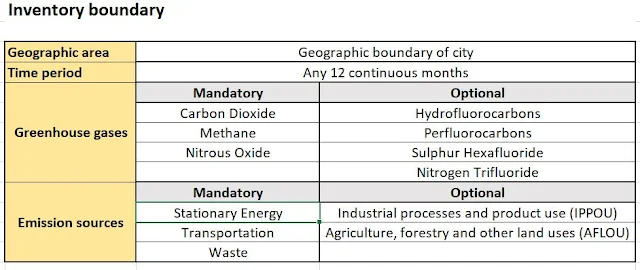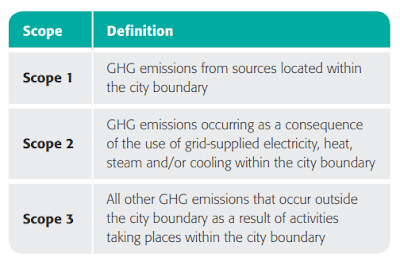GARP SCR: Understanding BASIC and BASIC+ (Part 1/2)
- Get link
- X
- Other Apps
This article is about describing BASIC and BASIC+. This post was to share more information on the topic as was discussed with Natascha Rüeger. She is one of the group member on the LinkedIn group(https://www.linkedin.com/groups/12842133/). Like all the other topics, she was trying to get a deeper understanding of the topic. This also gave me good reason to research this topic. I have tried to describe the information by striking a balance between the length of the article and clarity that it should impart. Thanks to Natascha again for her keen interest in the topic.
This article assumes that the reader has a background about different
“Scopes” of emissions as defined by The Greenhouse Gas Protocol. This
article is going to be split into 3 parts for better understanding.
Getting Started
Consider a city mayor entrusts a team to create an emissions
report for the entire city. Like for any other report, below questions ,at a
high level, needs a clarity:
- Scope
- Time period
- Data from emission sources to be reported
- Format of data - headings, sub-headings etc..
- Methodology
- Other miscellaneous details
Incidentally, The Global Protocol for Community-Scale Greenhouse
Gas Emission Inventories (GPC) responds to this challenge and offers a robust
and clear framework that builds on existing methodologies for calculating and
reporting city-wide GHG emissions. Below are the steps for using GPC for
preparing the report.
Step 1: Defining the inventory boundary
To use the GPC, cities must first define an inventory boundary. This identifies the geographic area, time span, gases, and emission sources, covered by a GHG inventory. This is basically answering the questions as we mentioned above. To illustrate:
Trivia questions to the curious minds, please share your thoughts in the comment section:
1. Why are only those gases defined as mandatory and remaining as
optional?
2. Why are only those emission sources defined as mandatory and
remaining as optional?
Step 2: Describing the Emission sources and Scope definitions
Emission sources are also called “Sectors” in the context. “Sectors”
are further divided into “Sub-sectors” as described in the below figure
Activities taking place within a city can generate GHG emissions that occur inside the city boundary as well as outside the city boundary. To distinguish among them, the GPC groups emissions into three categories based on where they occur: scope 1, scope 2 or scope 3 emissions. Definitions are provided in the below table, based on an adapted application of the scopes framework used in the GHG Protocol Corporate Standard.
The scopes framework helps to differentiate emissions occurring physically within the city (scope 1), from those occurring outside the city (scope 3) and from the use of electricity, steam, and/or heating/cooling supplied by grids which may or may not cross city boundaries (scope 2). Scope 1 emissions may also be termed “territorial” emissions because they occur discretely within the territory defined by the geographic boundary. Below figure illustrates which emission sources occur solely within the geographic boundary established for the inventory, which occur outside the geographic boundary, and which may occur across the geographic boundary.
Keep in mind the areas/topics encircled (ginger-shaped circles) in red in the above figure. We will discuss these areas in the next part of the article. (click)
Recap:
1) Inventory boundary has been defined. This boundary defines geographic area, time period, gases which need to be considered for emission calculations and emission sources (sectors and sub-sectors) which should be considered in the reporting.
2) Definitions of sectors and sub-sectors are described.
3) Scope 1, Scope2 and Scope 3 definitions are explained in the context of GPC
4) Lastly, the figure describes that the emissions happening within the city boundary are considered as scope 1 and outside as scope3. Emissions due to grid electricity within the boundary is considered as scope2.
-- End of Part 1 ---
#GARP #SCR #BASIC #BASIC+ #GPC #Reporting
- Get link
- X
- Other Apps





.png)

Comments
Post a Comment
Please share your thoughts here. If possible, please share your name and email so that it is easy to connect.